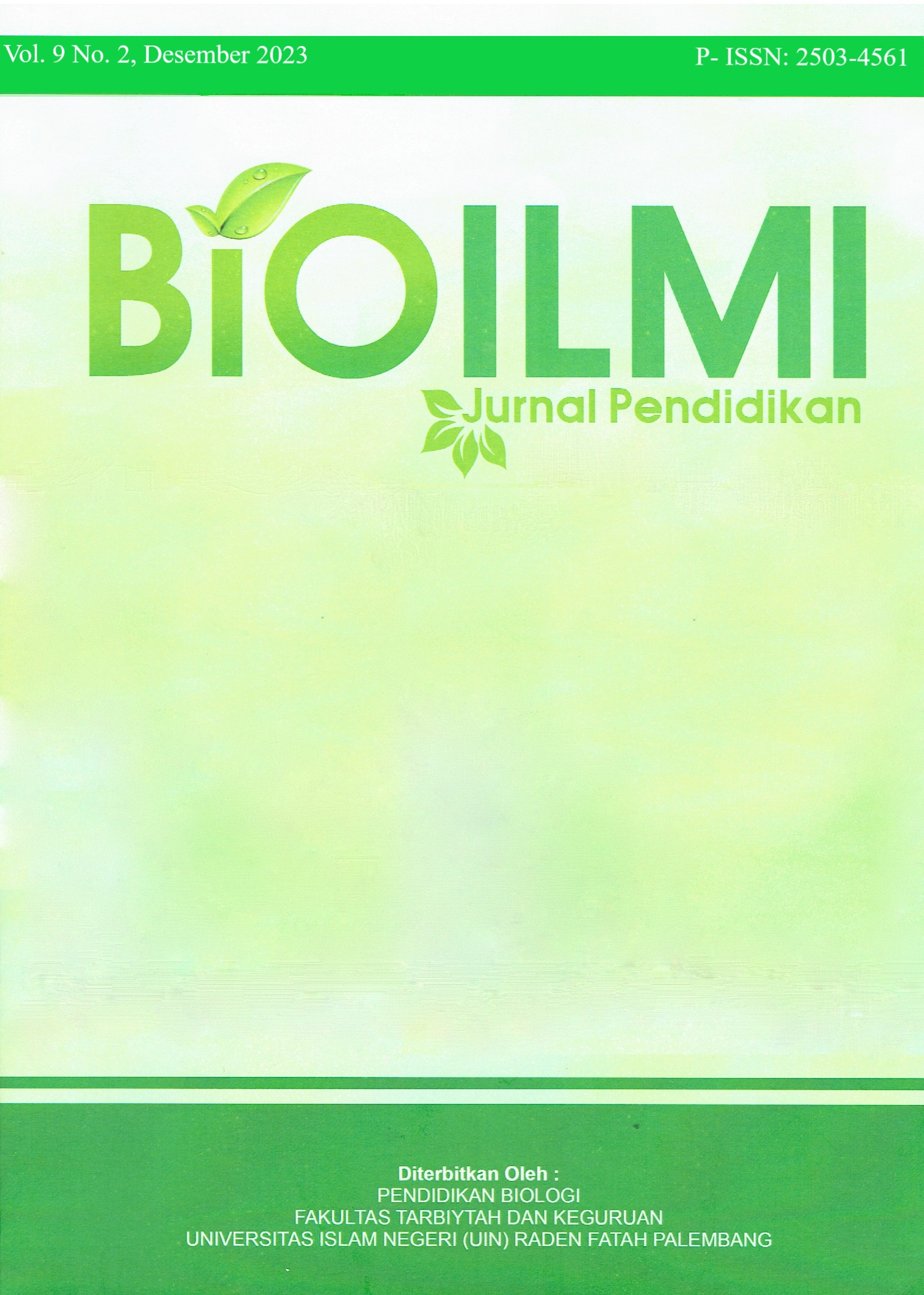PENERAPAN PROJECT BASED LEARNING (PjBL) DALAM MENINGKATKAN HASIL BELAJAR PESERTA DIDIK PADA MATERI PELESTARIAN DAN PERUBAHAN LINGKUNGAN KELAS X.2 SMA NEGERI 2 PALEMBANG
Main Article Content
Abstract
In general, students often feel bored with the learning process so that the subject matter is easily forgotten, this can affect the learning outcomes of a student. The purpose of this research activity is to determine the effectiveness of the project-based learning model in improving the learning outcomes of class X.2 students of SMA N 2 Palembang City on the topic of Environmental Conservation and Change. The method used was Classroom Action Research (PTK) with a research population of SMA N 2 students and the research sample was class X.2 students of 42 students. The results of individual learning mastery on environmental preservation and change material are seen as indicators of success. In cycle I obtained individual learning mastery of 45.23% with the number of students with scores > 70 of 19 students and students with grades < 70 of 23 students. In cycle II it increased by 80.95%, with the value of the number of students who scored > 70 as many as 34 students and students with grades < 70 as many as 8 students. The research results prove that student learning outcomes can be increased effectively by applying the Project Based Learning learning model.
Article Details
Authors who publish with this journal agree to the following terms:
- Authors retain copyright and grant the journal right of first publication with the work simultaneously licensed under a Creative Commons Attribution-ShareAlike 4.0 International License that allows others to share the work with an acknowledgement of the work's authorship and initial publication in this journal.
-
Authors are able to enter into separate, additional contractual arrangements for the non-exclusive distribution of the journal's published version of the work (e.g., post it to an institutional repository or publish it in a book), with an acknowledgment of its initial publication in this journal.
- Authors are permitted and encouraged to post their work online (e.g., in institutional repositories or on their website) prior to and during the submission process, as it can lead to productive exchanges and earlier and greater citation of published work.

Bio Ilmi: Jurnal Pendidikan by http://jurnal.radenfatah.ac.id/index.php/bioilmi is licensed under a Creative Commons Attribution-ShareAlike 4.0 International License.
